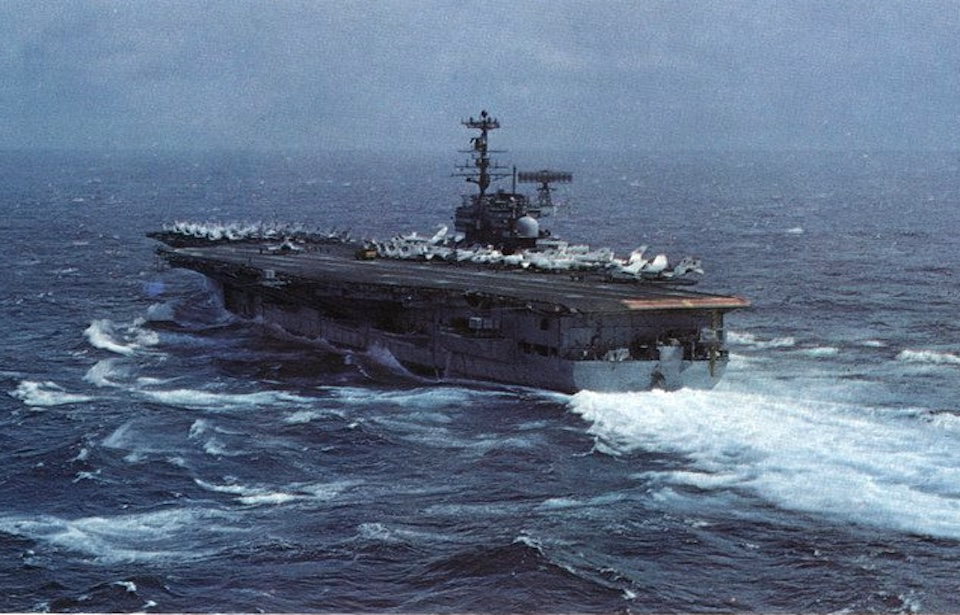The USS Forrestal (CV-59) was a cornerstone of U.S. naval operations for nearly 40 years, supporting a wide range of missions around the globe. Yet its legacy is forever linked to a tragic event: the catastrophic fire that erupted on July 29, 1967. Sparked by an accidental rocket launch on the flight deck, the blaze quickly spread, igniting fuel tanks and triggering a series of deadly explosions. The chaos claimed the lives of 134 sailors and injured many more, making it one of the deadliest peacetime accidents in Navy history.
In response, the Navy conducted an exhaustive investigation and implemented sweeping reforms. These included major updates to ordnance handling, firefighting training, and damage control protocols. The hard lessons learned from Forrestal’s tragedy reshaped carrier safety standards, influencing how aircraft carriers are operated to this day and saving countless lives in the decades since.
The USS Forrestal‘s early service in the Atlantic and Mediterranean
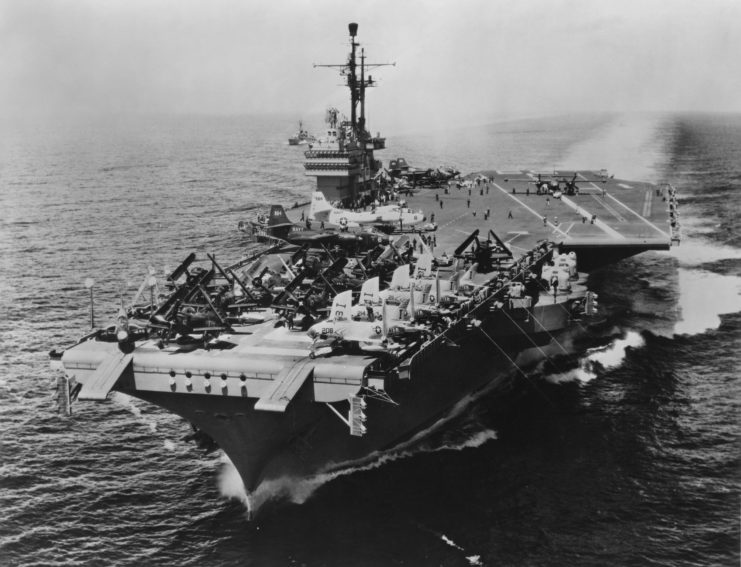
The USS Forrestal was the lead ship in her class of aircraft carriers, commissioned on October 1, 1955. As the first carrier specifically designed to operate jet aircraft, she earned the distinction of being the Navy’s first “supercarrier.”
Forrestal began her service in the Atlantic, playing a role in the Suez Crisis, and was later deployed to the Mediterranean with the U.S. Sixth Fleet. Prior to providing air support during the Vietnam War, she was stationed off the coast of Beirut for three days during the 1958 Lebanon crisis.
In November 1963, Forrestal made history when a Lockheed C-130 Hercules successfully completed 21 full-stop landings and takeoffs on her flight deck, setting a record for the largest and heaviest aircraft to ever land on an aircraft carrier. The following year, U.S. President Lyndon B. Johnson sent the carrier to Brazil to support the successful military coup that ousted President João Goulart.
The explosion on that fateful day
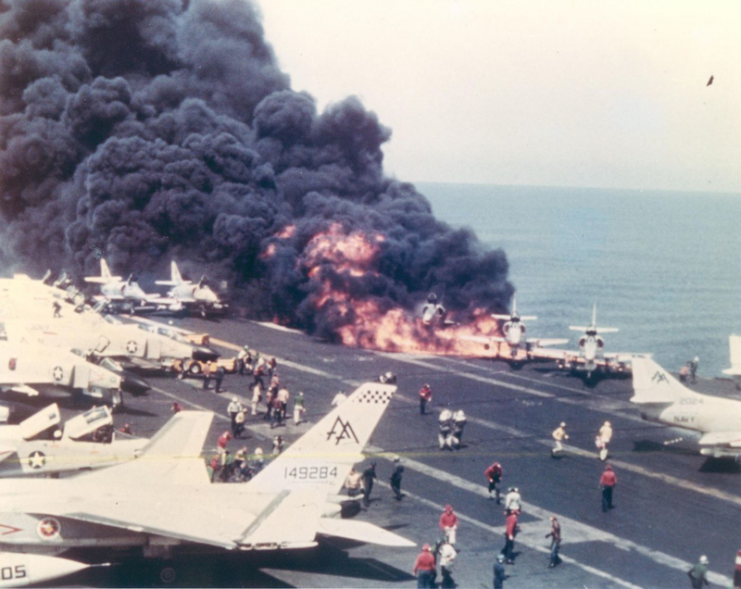
In June 1967, the USS Forrestal was positioned in the Gulf of Tonkin, near Vietnam’s northern coast in the South China Sea. During this time, aircraft from Attack Carrier Air Wing 17 (CVW-17) carried out numerous successful missions from the carrier, marking it as the Navy’s most intense air raid operation up to that point.
On July 29, 1967, an electrical malfunction aboard a McDonnell Douglas F-4B Phantom IIs on the Forrestal caused an Mk 32 “Zuni” Five-Inch Folding-Fin Aircraft Rocket (FFAR) to accidentally fire. It streaked across the deck and struck a parked, combat-ready Douglas A-4E Skyhawk, dislodging its 400-gallon external fuel tank. Senator John McCain was in the Skyhawk but managed to escape from the cockpit.
The collision ignited fuel from the A-4E, starting a fire that quickly spread. The initial explosion killed the first two firefighting teams trying to contain the blaze. Over the next five minutes, nine more explosions occurred following the rocket launch. The growing inferno eventually detonated a 1,000-pound AN-M65 bomb.
The losses onboard the USS Forrestal were devastating
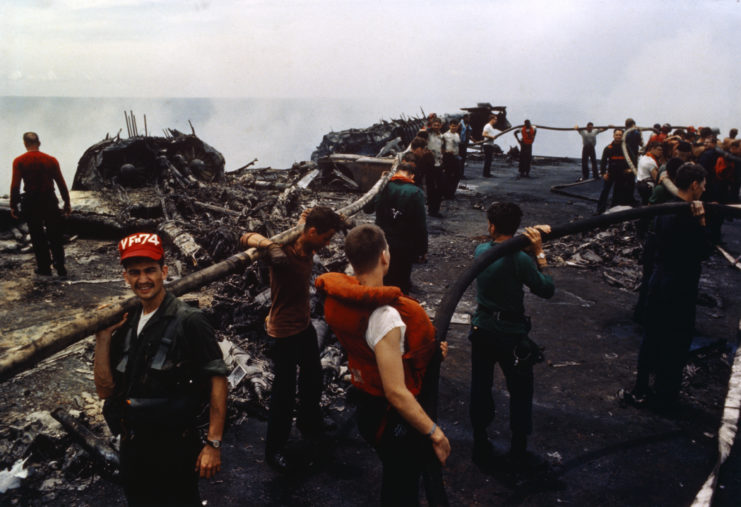
The US Navy changed its training
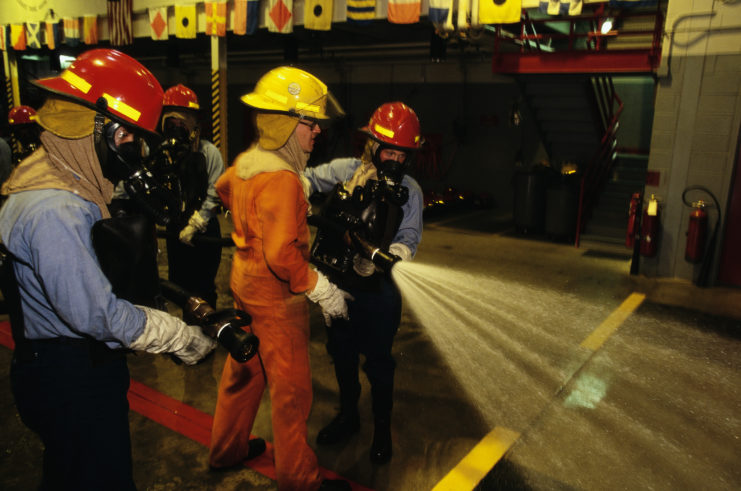
Following the incident, the Navy conducted a detailed review of its firefighting training and safety procedures. The investigation exposed a lax approach to safety, inadequate firefighting skills among sailors, and slow emergency response times.
The Aircraft Carrier Safety Review Panel, led by Rear Adm. Forsyth Massey, investigated the disaster. The panel concluded that, “Poor and outdated doctrinal and technical documentation of ordnance and aircraft equipment and procedures, evident at all levels of command, was a contributing cause of the accidental rocket firing.”
As a direct result of the USS Forrestal disaster, the Navy overhauled its training programs, introducing new safety protocols and firefighting procedures. Though the incident was tragic, it led to essential reforms that continue to protect sailors and prevent similar accidents today.
The USS Forrestal remained in service for several years after
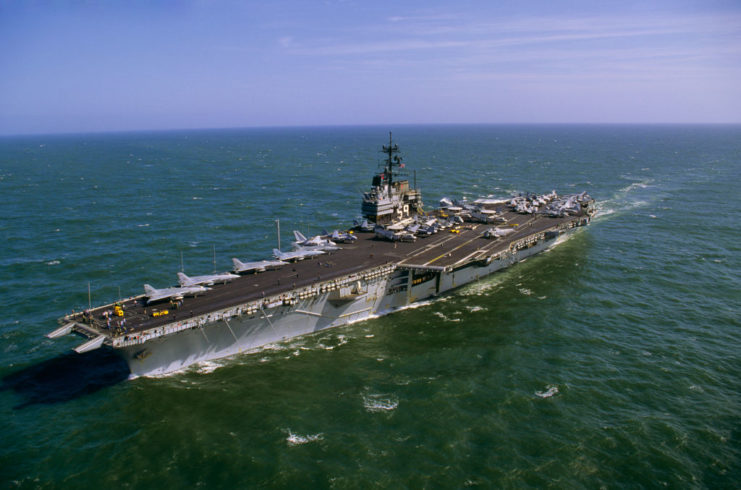
Despite the massive explosions on July 29, 1967, the USS Forrestal was not permanently taken out of service. Following extensive repairs, the aircraft carrier returned to active duty, completing several deployments to the Mediterranean Sea. Over the years, Forrestal participated in key events such as the 1981 Gulf of Sidra incident, supported Operation Earnest Will in the Middle East, and remained on alert during the Gulf War.
In 1991, Forrestal provided crucial air support during Operation Provide Comfort before transitioning into a training role, receiving the new designation AVT-59. The ship was officially decommissioned in 1993. Although there were attempts to preserve the Forrestal as a museum, these efforts ultimately failed, and the vessel was dismantled in 2015.
Today, a detailed model of the USS Forrestal is exhibited as part of the “America’s War in Vietnam” display at the National Museum of the U.S. Navy.
